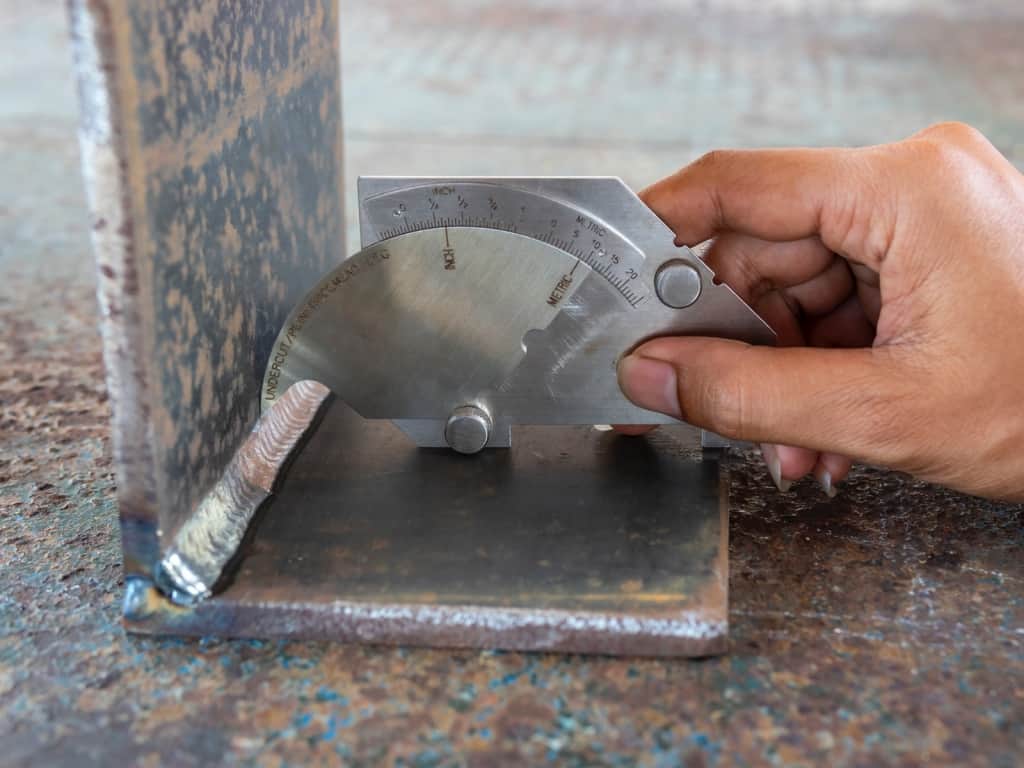Ultimate Guide to Preventing Weld Undercut: Tips and Techniques
Ultimate Guide to Preventing Weld Undercut: Tips and Techniques
Blog Article
Understanding the Causes and Solutions for Undercut Welding in Metal Construction Processes
In the world of metal construction processes, the incident of undercut welding positions a substantial obstacle that requires a comprehensive understanding of its reasons and feasible services. The elaborate interplay of numerous elements during welding procedures can bring about this undesirable sensation, influencing the structural integrity and total quality of the bonded joints - Preventing weld undercut. By exploring the origin of undercut welding and exploring reliable restorative procedures, fabricators can raise the criterion of their handiwork and make sure the manufacturing of remarkable metal components
Typical Sources Of Undercut Welding
Regularly overlooked in metal manufacture, undercut welding happens because of various elements that require precise attention and experience to be efficiently reduced. One common root cause of undercut welding is extreme heat input. When the heat input is too expensive, it can result in the melting and subsequent erosion of the base product along the edges of the weld joint, developing a groove or undercut. In addition, improper welding strategies, such as making use of the incorrect welding angle or travel rate, can additionally add to undercut formation. Inadequate securing gas insurance coverage is one more vital factor that can result in damaging. Insufficient gas protection fails to shield the weld pool properly, causing oxidation and undercut problems. The choice of welding criteria, such as voltage, current, and wire feed rate, plays a significant role in the incident of undercut welding. Recognizing these usual reasons is essential for implementing preventative actions and making sure high-quality welds in steel construction processes.
Impact of Incorrect Welding Parameters
Unreliable welding parameters can substantially compromise the integrity and top quality of welded joints in metal construction procedures. The effect of wrong welding parameters shows up in numerous means, leading to architectural weaknesses and issues in the welded elements. Meticulous attention to welding specifications is paramount to guarantee the manufacturing of high-grade welds with the desired mechanical homes and architectural integrity.
Impact of Improper Torch Angle
Improper lantern angle in welding operations can dramatically influence the quality and integrity of the final weld joints in steel manufacture procedures. The lantern angle plays an important function in determining the warm input and distribution throughout welding. When the lantern angle is incorrect, issues such as damaging can arise. Undercutting is a common welding issue where a groove forms along the weld toe, deteriorating the joint and endangering its architectural stability.
A torch angle that is as well steep can cause inadequate infiltration, insufficient combination, and increased spatter. On the various other hand, a lantern angle that is too superficial can cause extreme infiltration, burn-through, and distortion of the base material. Preventing weld undercut. Correct lantern angle is necessary for making certain consistent weld quality, stamina, and appearance
To avoid undercutting and other flaws brought on by improper torch angles, welders should be trained to maintain the appropriate lantern angle throughout the welding process. Routine monitoring and adjustment of lantern angles during welding can aid accomplish sound welds with minimal problems.
Duty of Inadequate Welding Methods

An additional element of poor welding methods is incorrect weld prep work. Inadequate cleaning of the base metals, wrong joint layout, or not enough edge preparation can all add to undercut welding. Furthermore, insufficient shielding gas coverage or making use of the incorrect sort of gas can result in incomplete blend and the development of undercut problems.
To attend to the function of inadequate welding methods in metal fabrication procedures, it is important to offer detailed training for welders. Correct education and learning on welding criteria, joint preparation, and protecting gas selection can help prevent undercut welding and guarantee high-quality welds in steel construction projects.
Effective Solutions for Undercut Welding
Addressing undercut welding in steel fabrication requires applying efficient services to enhance weld quality and structural integrity. Among the key solutions to deal with undercut is to change welding specifications such as voltage, present, and take a trip rate to ensure proper heat input and combination. By fine-tuning informative post these setups, welders can prevent extreme melting of the base steel and filler product, decreasing the chance of undercut formation.
In addition, correct joint preparation is critical in avoiding undercut. Making certain clean base metal surface areas without impurities and using the proper bevel angle can help advertise better weld penetration and decrease the danger of undercut - Preventing weld undercut. Using suitable welding strategies, such as weaving or oscillating the lantern, can additionally aid in dispersing warmth equally and filling the weld joint effectively, lessening the possibility of undercut issues
Furthermore, selecting the appropriate welding consumables, including electrodes and filler metals, is vital in minimizing undercut. Using materials with appropriate chemical make-ups and mechanical residential or commercial properties can contribute to attaining audio welds with very little undercut. Routine examination and quality control actions should also be carried out to find and resolve undercut issues promptly, guaranteeing the general integrity of produced steel components.

Verdict
Finally, recognizing the causes and options for undercut welding in steel fabrication processes is essential for attaining premium welds. By attending to usual reasons such as wrong welding parameters, inappropriate lantern angle, and poor welding strategies, welders can protect against undercutting and make certain solid, durable welds. It is crucial to pay focus to these variables and carry out click site reliable remedies to enhance the total welding procedure and final item top quality.

Report this page